
Overdrive is a natural fit with electric guitars. But when used sparingly, it can also lend a bit of gritty warmth to an acoustic guitar and give your tone more mass and power.
Acoustic guitarists who use overdrive pedals onstage include Howie Day, Joseph Arthur, Damien Rice, Phil Keaggy, John Butler and Grant-Lee Phillips. Some of the pedals they’ve used include the Maxon OD-9 (Day), the Visual Sound (now Truetone) Route 66 (Keaggy) and the Boss ODB-3 Bass Overdrive (Butler, who uses it with his 12-string Maton).
But adding an overdrive to your acoustic rig isn’t as easy as it is with an electric setup. Feedback is the main problem. Amplified acoustics are prone to it, and adding any kind of overdrive effect into the equation just makes it worse.
In this article, we’ll explain how to avoid feedback when placing an overdrive in your acoustic guitar signal chain. We’ll also explore some pickup options that can tame the howling, and suggest a few overdrive pedals that might help you add the perfect amount of crunch to your acoustic tones.
CAN I USE THE P.A.?
If you’re an acoustic guitarist who likes to play through a venue’s P.A. system, we have bad news. Dirt boxes are designed to work with guitar amps. The sound through a P.A. will be extremely fuzzy and unsuitable for an acoustic guitar. It will also increase the guitar’s tendency to feedback, which makes the soundperson’s job that much harder.
If overdriven acoustic tones are what you crave, the best solution is to run your instrument through an amp.
ACOUSTIC OR ELECTRIC GUITAR AMP?
Which amp you use depends on your playing requirements. Acoustic amps are designed to reproduce an acoustic guitar’s full frequency range without distortion, and if you already have an acoustic guitar amp, there’s no reason why you can’t use it with an overdrive pedal. For that matter, if you intend to use your overdriven tone only once in a while, it makes sense to use an acoustic amp, since that will ensure your instrument sounds its best.
On the other hand, if you anticipate that you’ll regularly use overdrive with your acoustic, a standard electric guitar amp may be more practical. Tube amps pair well with amplified acoustic guitars. (John Lennon and George Harrison played their Gibson J-160E acoustic-electrics through their valve-driven Vox AC30 amps on the Beatles’ early recordings, as well as onstage.) For best results, set the amp’s controls for a clean sound and let your pedal add the grit. You may also benefit from adding an EQ pedal into your signal chain to give you more control over your tone.
WHAT PICKUP?
If you already have an acoustic pickup, by all means check it out with an overdrive box and see if you like the results.
That said, not all acoustic pickups will pair nicely with overdrive. In general, avoid piezos. While they allow you to play at louder levels without fear of feedback, the sound they produce is too compressed and harsh for a dirt pedal, and your tone will suffer. For that matter, piezos will become prone to feedback when used in combination with a distortion pedal.
If you have an internal pickup installed in your acoustic, you can reduce the propensity for feedback by using a soundhole cover. They’re inexpensive, and they do a good job of preventing the buildup of audio waves responsible for feedback, though usually at the cost of lower-frequency resonances. Planet Waves makes the Screeching Halt, and Ultra has the FBR2. Dunlop has made a small range of Suppressor soundhole covers, and while they appear to be no longer in production, you can still find them at stores.
For best results, choose a magnetic soundhole pickup. They tend to add a bit of an electric sound to acoustics, and that’s what you’re going for anyway. Like piezos, they amplify the strings and don’t pick up the vibrations from the guitar’s top, so they’re good to use in high-volume situations.
For even better performance, select a pickup that completely covers the soundhole, such as the Fishman Neo-Buster. It combines Fishman’s popular Neo-D single-coil pickup with a soundhole cover that reduces energy build-up inside the guitar—the very thing that causes feedback. There aren’t too many videos demonstrating the Neo-Buster, but the one below shows it in use with a 1953 Gibson J-45 acoustic with a wah pedal into a Blackstar combo. (Yes, you can use a wah with an acoustic too!)
There are many other magnetic acoustic soundhole pickups to choose from, including the Seymour Duncan Woody SC (Single-Coil) and HC (Hum-Cancelling) pickups, the DiMarzio Super Natural Plus, the Bartolini 3AV (as favored by Kurt Cobain), the EMG ACS and the L.R. Baggs M80. You can also check out this side-by-side comparison of Fishman’s Rare Earth humbucking soundhole pickup and L.R. Baggs’ M1a below.
Whatever soundhole pickup or cover you choose, make sure it will fit your guitar. Below, you can check out demos of the soundhole pickups referred to above.
WHAT OVERDRIVE?
To begin, just try whatever you’ve already got. In general, though, the cleaner the overdrive, the less nasty the results. Of course, if you’re looking for something really gnarly, go for it!
BBE’s Acoustimax Sonic Maximizer is designed for acoustic guitars and makes it easy to get overdriven tones just by cranking up its Gain control. At under $150 street, it has a nice price, too. The Boss BD-2 has transparent tone and works well with acoustic signals. (Sorry, there’s no footage of it with an acoustic guitar, but you can learn more about it in the video below.) Tech21’s SansAmp range is also a good option, and the video below shows a Para Drive DI in use with an acoustic guitar. You can hear the result of turning up the Drive control around the 4:10 mark. The Voodoo Lab Sparkle Drive also gets raves from acoustic guitarists. It features a Clean control that blends back in with the boosted direct signal to restore the attack and feel lost in a highly compressed overdrive circuit. (Again, there’s no demo with an acoustic guitar, but the video below takes you through the essential features.)
Of course, don’t forget the classic Ibanez Tube Screamer, and add the Pedal Diggers 819 overdrive to your list. It’s made in Japan and can usually be found on eBay and Reverb.com. You can hear both of those pedals compared in the video below.
Finally, returning to Kurt Cobain, it’s worth noting that he used the Boss DS-2 for Nirvana’s MTV Unplugged performance. In this video, YouTube poster alexrcowan attempts to recreate Cobain’s rig, and the results are impressive. —Christopher Scapelliti















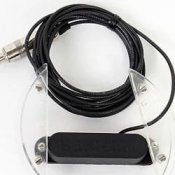
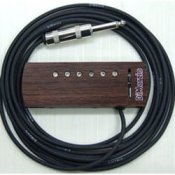
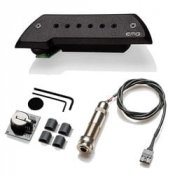
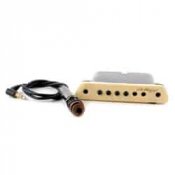
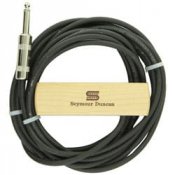
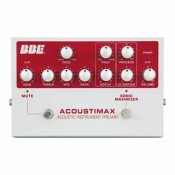
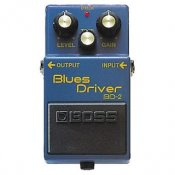
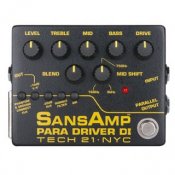
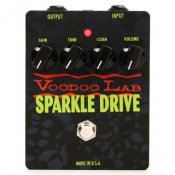








1 comment
Cal says:
Nov 19, 2020
Cool run down, thanks for that. Just to share, I was playing around with this very thing the other day at my local guitar store. With the stock piezo system on a couple different guitars, I was able to get really nice overdriven tones through a Fender Rumble 40 bass amp, as well as switch too really good acoustic clean tone, all just with the controls on an amp. With the addition of a some reverb and maybe a chorus, you’d be able to get any acoustic sound you want out of this rig… for under $500 minus the guitar.